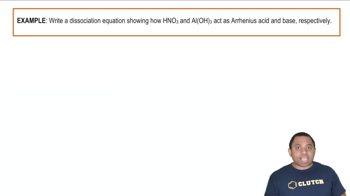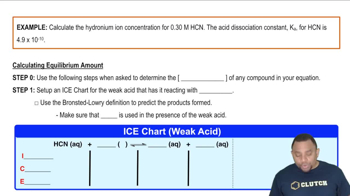Here are the essential concepts you must grasp in order to answer the question correctly.
pH Scale
The pH scale measures the acidity or basicity of a solution, ranging from 0 to 14. A pH of 7 is neutral, while values below 7 indicate acidity and above 7 indicate basicity. The pH is calculated as the negative logarithm of the hydrogen ion concentration, pH = -log[H+]. Understanding this scale is crucial for determining the acidity of solutions like HCl.
Recommended video:
Hydrochloric Acid (HCl) Dissociation
Hydrochloric acid (HCl) is a strong acid that completely dissociates in water to produce H3O+ ions and Cl- ions. The concentration of H3O+ ions directly influences the pH of the solution. In very dilute solutions, such as 1.0 * 10^-10 M HCl, the contribution of H3O+ from water itself (1.0 * 10^-7 M) must also be considered when calculating the overall pH.
Recommended video:
Acid-Base Dissociation Example
Contributions to H3O+ Concentration
In dilute acid solutions, the concentration of H3O+ ions from the acid must be compared to the autoionization of water, which contributes 1.0 * 10^-7 M H3O+. For 1.0 * 10^-10 M HCl, the total H3O+ concentration is dominated by the water's contribution, leading to a pH that is still around 7. This concept is essential for understanding how very dilute acids behave in solution.
Recommended video:
Hydronium Ion Concentration Example




